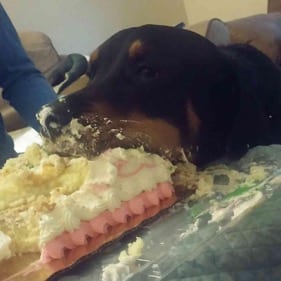Certified Hospice and Palliative Care Veterinarian
Originally published on DrAndyRoark.com
Talking with other veterinarians about hospice is something I do every day. I’m in a Facebook group online called Veterinarian Palliative Medicine, and I can be happy for hours comparing notes and techniques with my colleagues, knowing they will understand my struggles.
Recently we had a heartfelt discussion about getting over the anxiety of providing home euthanasia for clients. We agreed that we all want every single one to go perfectly smoothly for the family and that when the inevitable “difficult” euthanasia happens, it makes us feel horrible. It makes us feel like failures.
Veterinarians tend to be perfectionists, and we are harder on ourselves than anyone else in our lives. Euthanasia is one of those times when we really have unrealistic expectations. The good news is, most of our clients DO NOT have the same expectations. In fact, many of them have had such terrible euthanasia experiences that “I hope you don’t have to wrestle him to the ground” or “I hope he doesn’t scream” is the very, very low bar they have set for us.
Death isn’t pretty. It isn’t smooth. It’s nothing like the movies. A natural death can be downright terrifying, especially if there is no hospice assistance to lend peace to the transition. So, if God, Mother Nature, and all the Saints and Angels can’t guarantee a peaceful passing, then I’m letting you all off the hook.
Here are the things that most concern your families:
- Am I making the right decision or selfishly killing my best friend?
- Is it going to hurt?
- Will you be giving sedation first?
- Should my kids be present?
- Should my pets be present?
- Can I handle being there?
- How do I know that I’m only getting my pet’s ashes and not someone else’s?
“How good a phlebotomist are you?” has never come up.
Here’s how to make euthanasia as peaceful for your families as possible:
Set expectations – don’t give them every single possible side effect or issue, just the things you’ve seen multiple times or things you suspect might happen due to this particular pet’s disease process. I tell clients up front that I sedate so if I don’t get the vein on the first try, it doesn’t hurt. If they are in a hurry, let them know you will do the best you can, but that if it takes longer, you’ll support them the whole way.
Validate their feelings – it’s OK to cry, it’s ok to be scared, it’s OK to doubt your decision… It’s just OK.
Take the burden off their shoulders – I’m here to take care of you. I’m not here to judge. Cry as much as you want. Tell me what you need. I’ve got you. Hang on tight.
Focus on the pet and help them focus on the pet – give them homework to find something tasty and forbidden to feed their pet on his last day. For what it’s worth, watching a dog eat an entire sheet cake is the BEST. THING. EVER. You can’t help but smile through the tears. As a bonus, they don’t tend to notice the sedative injection when they are

Photo used with owner permission.
Above all, stay calm. They are looking to you to see if they should be more alarmed and upset than they already are. Keep your voice steady, reassure them, squeeze their hand, and tell them everything’s going to be OK. And then silently tell yourself. And in case that’s not enough, I’ll tell you too.

